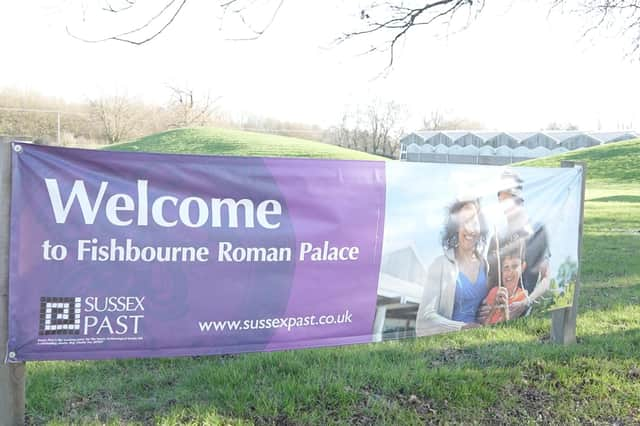The history of Fishbourne Roman Palace in West Sussex and how it was discovered


The Fishbourne Roman Palace is the largest residential Roman building discovered. Dating back from 75 CE, the site contains artefacts, a ‘well-preserved floor’ and a museum on-site.
In 1960, works were underway by a contractor near Fishbourne. They cut a water main trench through fields just North of the village and discovered what is described as ‘ancient-looking rubble’.
Advertisement
Hide AdAdvertisement
Hide AdTheir findings were relayed back to one of the local archaeological committees. Their initial assessments of the trench suggested there could be presence of a substantial Roman building.
Then, the Chichester Civic Society Excavation Committee carried out an exploratory excavation in 1961. Their findings and examination determined that the site had been occupied by a large, late-first-century building.
From 1961 to 1968, eight major excavation seasons commenced, the most noted discoveries include the mosaic floors which are of national and international significance. There is also a perfectly preserved Dolphin mosaic in the north wing.
According to Wikipedia,
Information and sources of information credit go to sussexpast.co.uk and Wikipedia, ‘The first buildings on the site were granaries, over 33 m (108 ft) long, which were apparently a supply base for the Roman army constructed in the early part of the conquest in 43 AD. Later, two residential timber-frame buildings were constructed, one with clay and mortar floors and plaster walls which appears to have been a house of some comfort’
Many people are undecided on who originally or was the resident of the palace. The first theory was that the owner was Tiberius Claudius Cogidubnus , a pro-Roman local chieftain in around 60 AD.
Comment Guidelines
National World encourages reader discussion on our stories. User feedback, insights and back-and-forth exchanges add a rich layer of context to reporting. Please review our Community Guidelines before commenting.
